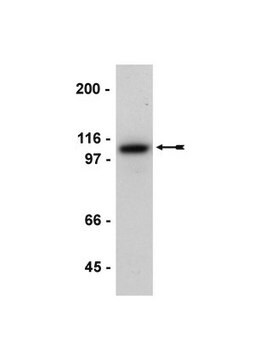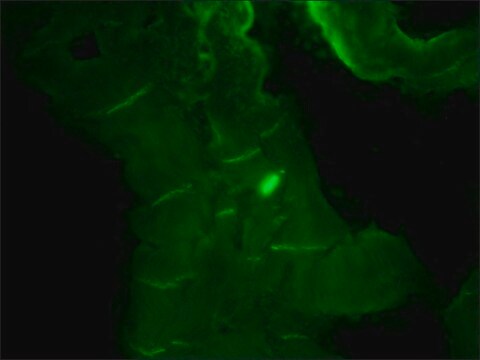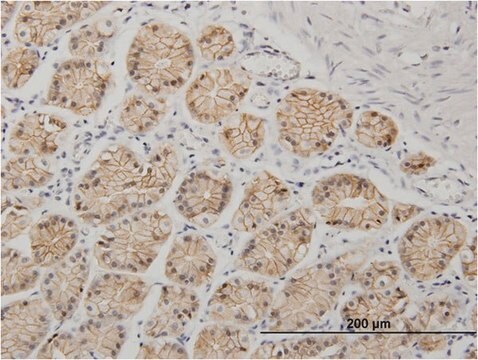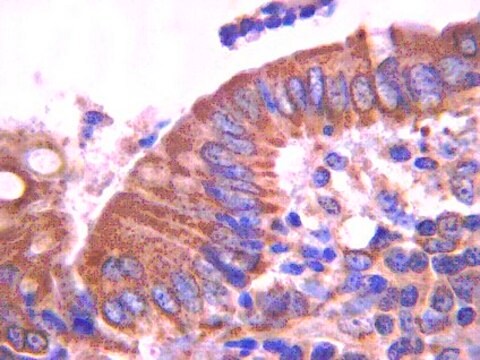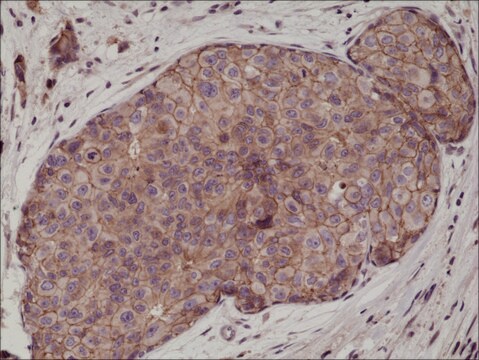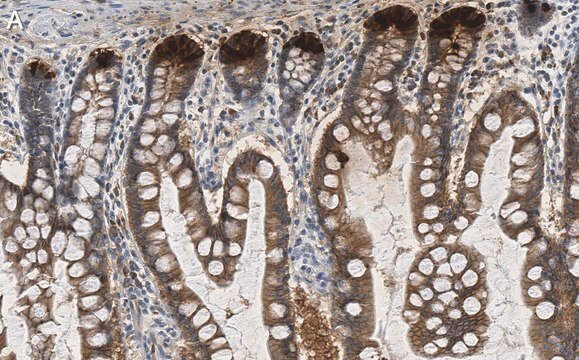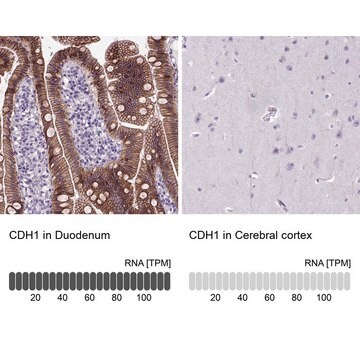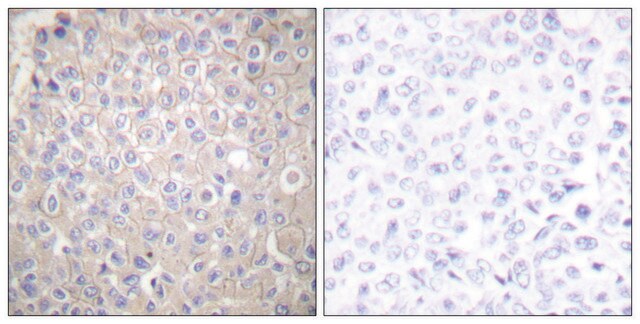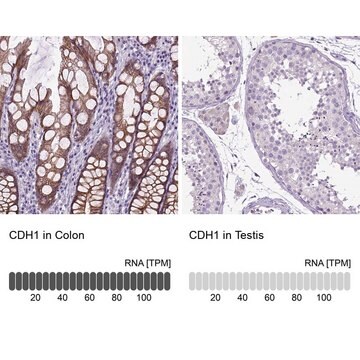SAB4700237
Monoclonal Anti-CDH1 antibody produced in mouse
clone 67A4, purified immunoglobulin, buffered aqueous solution
Synonym(s):
Anti-CD324, Anti-E-CADHERIN
Sign Into View Organizational & Contract Pricing
All Photos(1)
About This Item
UNSPSC Code:
12352203
NACRES:
NA.41
conjugate:
unconjugated
application:
FACS
clone:
67A4, monoclonal
species reactivity:
human
citations:
5
technique(s):
flow cytometry: suitable
Recommended Products
biological source
mouse
Quality Level
conjugate
unconjugated
antibody form
purified immunoglobulin
antibody product type
primary antibodies
clone
67A4, monoclonal
form
buffered aqueous solution
species reactivity
human
concentration
1 mg/mL
technique(s)
flow cytometry: suitable
isotype
IgG1
NCBI accession no.
UniProt accession no.
shipped in
wet ice
storage temp.
2-8°C
target post-translational modification
unmodified
Gene Information
human ... CDH1(999)
General description
CDH1 (cadherin 1) codes for a transmembrane glycoprotein E-cadherin that is located on human chromosome 16q22.1. It is a tumor suppressor gene, which is also known as Cdh1p/Hct1p, Fizzy-related, Ste9, or Srw1.
Immunogen
T-47D cells
Application
The reagent is designed for Flow Cytometry analysis using 5-10 μg reagent / 1e6 cells in a suspension.
Biochem/physiol Actions
CDH1 (cadherin 1) helps to conserve the homophilic cell-cell adhesion in epithelial tissues. Inadequate expression of CDH1 results in colon cancer and renal cell carcinoma (RCC).
Features and Benefits
Evaluate our antibodies with complete peace of mind. If the antibody does not perform in your application, we will issue a full credit or replacement antibody. Learn more.
Physical form
Solution in phosphate buffered saline, pH 7.4, with 15 mM sodium azide.
Disclaimer
Unless otherwise stated in our catalog or other company documentation accompanying the product(s), our products are intended for research use only and are not to be used for any other purpose, which includes but is not limited to, unauthorized commercial uses, in vitro diagnostic uses, ex vivo or in vivo therapeutic uses or any type of consumption or application to humans or animals.
Not finding the right product?
Try our Product Selector Tool.
Storage Class Code
10 - Combustible liquids
Flash Point(F)
Not applicable
Flash Point(C)
Not applicable
Choose from one of the most recent versions:
Already Own This Product?
Find documentation for the products that you have recently purchased in the Document Library.
CDH1 promoter hypermethylation and E-cadherin protein expression in infiltrating breast cancer.
Caldeira JRF, et al.
BMC Cancer, 6(1), 48-48 (2006)
Mitotic regulation of the APC activator proteins CDC20 and CDH1
Kramer ER, et al.
Molecular Biology of the Cell, 11(5), 1555-1569 (2000)
Reduced E-cadherin facilitates renal cell carcinoma progression by WNT/?-catenin signaling activation
Zhang X, et al.
Oncotarget, 8(12), 19566-19576 (2017)
Identification of downstream metastasis-associated target genes regulated by LSD1 in colon cancer cells
Chen J, et al.
Oncotarget, 8(12), 19609-19630 (2017)
Wan-Ting Chen et al.
Neoplasia (New York, N.Y.), 16(8), 617-626 (2014-09-16)
Hepatocellular carcinoma (HCC) often results from chronic liver injury and severe fibrosis or cirrhosis, but the underlying molecular pathogenesis is unclear. We previously reported that deletion of glucose regulated protein 94 (GRP94), a major endoplasmic reticulum chaperone, in the bone
Our team of scientists has experience in all areas of research including Life Science, Material Science, Chemical Synthesis, Chromatography, Analytical and many others.
Contact Technical Service